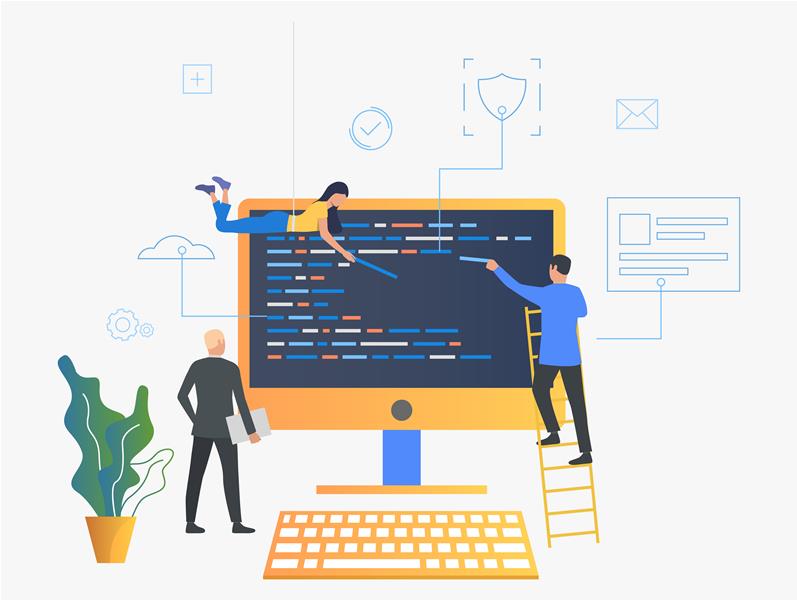

Introduction to Computer Operating System
In this article, we will see an outline on Types of Computer Operating System. Each modern device requires an operating system, whether it’s a desktop or a laptop computer, or a smartphone or a video game system. This is the main computer program that is placed between the software and the hardware, distributes space and computing assets into applications, manages files and enforces rules on security.
What is Operating System?
An OS (Operating System) is a software that acts as an interface between the end-user and the hardware of the computer. To perform other programs, every computer must have at least one OS. Applications such as Chrome, Games, MS Word, etc requires an environment where it runs and does its task. The OS allows you to communicate without being able to speak the language of your machine. Without an operating system, the user cannot use a computer or mobile device.
Types of Computer Operating Systems
Operating Systems are usually pre-installed in on any computer. Below we will discuss different types of Operating System:
1. Apple iOS
Apple’s iOS is a popular operating system for smartphones. It works on Apple hardware, including iPhone’s and iPad tablets. iOS features include an application shop where users can buy and download free apps, strong safety and encryption focus to limit what unauthorized users can remove from the phone and a simple, streamlined interface with minimal hardware buttons.
2. Microsoft Windows
Since 1985 Microsoft Windows has been in one form or another and remains the most common home and office software operating system. The latest versions are also used in some devices, including Windows 10, and the OS is also used on some internet and server computers. Windows may be used by machines from a variety of companies. Windows ‘ original versions worked with a previous Microsoft OS called MS-DOS modern interface on top of traditional DOS text-driven commands. Microsoft Windows UI’s signature features include windows themselves – panel-screens that represent individual applications in a rectangular shape. The start menu of Windows helped generations of users to find their programs and files.
3. Apple MAC OS
Apple’s macOS is running on Apple laptops and desktops as the successor of the popular operating system OS X. Because of its research into AT&T’s Bell Labs in the 1960s on the historic Unix family of operating systems, macOS shares certain features with other Unix-related systems, including Linux. Although the graphical interfaces are different, many of the programming interfaces and command-line features are similar. Signature elements in macOS include the dock used to check for programs and files that are commonly used, single keyboard keys, including the Command key. macOS is famous for its user-friendly functionalities like Siri, Apple’s video chatting software, FaceTime and a natural-voice personal assistant.
4. Linux Operating System
Linux is a computer operating system which is similar to Unix built under the development and distribution model of free and open-source software. Linux’s popular feature is the Linux kernel, the first operating system kernel released by Linus Torvalds on September 17, 1991. The operating system is loading itself into memory and begins to control the computer’s resources. After that, it offers certain tools for other applications that the client wants to run. Most of the embedded systems run Linux today. Electronic gadgets such as internet router, washing machine, TV, refrigerator, etc can be run on Linux. Hence Linux is also one of the most popular operating systems nowadays.
How a Computer Operating System Works?
The computer operating system works in two different ways:
1. Real-Time Operating System
Real-Time operating systems are also called multitasking systems. The normal system is in charge of managing a computer’s hardware resources. The RTOS carries out such tasks but is particularly designed with high reliability to run applications at a scheduled or precise time.
2. Normal Operating System
The normal operating system is divided into two types:
- GUI: The interface graphical mode is a mouse-based functional system where a user carries out tasks or operations without typing the keyboard commands. Through pressing with a mouse button, files or icons can be opened or closed. The mouse and keyboard are used for several purposes to control the GUI operating systems.
- CUI: A text-based OS that is used to communicate with programs or files by typing commands to perform certain tasks CUI operating systems. The operating system of the command line will only enter commands on a keyboard. DOS and UNIX are included in the command line operating systems. The advanced operating system for commands is faster than the advanced GUI.
Let’s have a comparison between the bit operating system:
| Parameters | 32 Bit | 64 Bit |
| Architecture and Software | Allow 32-bit simultaneous data processing. | Allow 64-bits simultaneous data processing. |
| Compatibility Applications | 32-bit requires 32-bit operating systems and CPUs. | A 64-bit Operating System and CPU are required for 64-bit applications. |
| Systems Available | Windows 7, Windows 8, and Windows XP and Linux models are all available. | Vista, 7, Mac OS X, and Ubuntu. Effective Windows XP. |
| Memory Limits | Systems with 32-bit RAM is limited to 3.2 GB. | 64-bit systems allow a maximum of 17 Billion GB of RAM. |
Conclusion – Types of Computer Operating System
In this article, we have seen what is operating system, types of operating systems along with its examples and how the operating system enables computer hardware to communicate with and run computer programs. I hope you will find this article helpful.
[“source=educba”]





